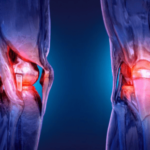1. Understanding Leg Lengthening Surgery
Leg lengthening surgery is a medical procedure designed to increase the length of one or both legs. It is often performed to correct leg length discrepancies caused by congenital conditions, injuries, or medical disorders. The procedure involves the gradual stretching of the bone and surrounding tissues to achieve the desired length.
2. Reasons for Leg Lengthening Surgery
Patients seek leg lengthening surgery for various reasons, including correcting limb length discrepancies, enhancing physical appearance, and improving functionality. Some individuals undergo this procedure to alleviate pain and discomfort associated with uneven leg lengths, while others aim to increase their overall height.
3. Pre-Surgery Consultations
Before undergoing leg lengthening surgery, patients must have thorough consultations with their orthopedic surgeon. These consultations involve discussing the patient’s medical history, understanding the procedure, setting realistic expectations, and conducting necessary physical examinations and imaging studies to plan the surgery.
4. Preparing for Surgery
Preparation for leg lengthening surgery involves several steps, including medical evaluations, blood tests, and imaging studies like X-rays or MRI scans. Patients may also be advised to maintain a healthy diet, quit smoking, and avoid certain medications that can interfere with the surgery and healing process.
5. The Surgical Procedure
Leg lengthening surgery typically involves cutting the bone (osteotomy) and attaching an external or internal device to gradually pull the bone apart. This device slowly stretches the bone and surrounding tissues, allowing new bone to form in the gap. The process is carefully monitored by the surgeon to ensure proper alignment and growth.
6. Post-Surgery Recovery
Recovery from leg lengthening surgery involves a combination of rest, rehabilitation, and follow-up appointments with the surgeon. Patients may need to use crutches or a wheelchair during the initial recovery phase to avoid putting weight on the operated leg and to facilitate healing.
7. Pain Management
Pain management is a crucial aspect of recovery after leg lengthening surgery. Patients are typically prescribed pain medications to alleviate discomfort. Additionally, techniques like ice packs, elevation, and physical therapy can help manage pain and reduce swelling.
8. Physical Therapy and Rehabilitation
Physical therapy plays a vital role in the recovery process after leg lengthening surgery. A physical therapist will design a personalized rehabilitation program to help the patient regain strength, flexibility, and mobility in the affected leg. Regular therapy sessions are essential for a successful outcome.
9. Monitoring Bone Growth
Regular monitoring of bone growth is essential during the leg lengthening process. Patients will have frequent follow-up appointments with their surgeon to take X-rays and ensure that the bone is growing correctly and the lengthening device is functioning as expected.
10. Lifestyle Adjustments
Patients undergoing leg lengthening surgery may need to make temporary lifestyle adjustments. This can include modifying daily activities, avoiding high-impact exercises, and making changes to their work or school routines to accommodate the recovery period.
11. Potential Complications
Like any surgical procedure, leg lengthening surgery carries potential risks and complications. These can include infection, nerve damage, joint stiffness, and problems with bone healing. Discussing these risks with the surgeon before the procedure is crucial for informed decision-making.
12. Psychological Impact
The psychological impact of leg lengthening surgery should not be underestimated. Patients may experience a range of emotions, including anxiety, frustration, and impatience during the lengthy recovery process. Seeking support from mental health professionals, family, and friends can be beneficial.
13. Long-Term Outcomes
The long-term outcomes of leg lengthening surgery can be very positive, with many patients achieving their desired leg length and improved functionality. However, the final results depend on factors such as the patient’s age, overall health, and adherence to post-surgery care and rehabilitation.
14. Success Stories
Many individuals have undergone leg lengthening surgery with successful outcomes. Hearing about others’ experiences can provide motivation and reassurance for those considering the procedure. Success stories often highlight improved physical appearance, increased confidence, and enhanced quality of life.
15. Cost Considerations
Leg lengthening surgery can be expensive, and costs vary depending on the complexity of the procedure, the type of lengthening device used, and the geographic location. Patients should discuss all financial aspects, including insurance coverage and payment options, with their healthcare provider.
16. Choosing the Right Surgeon
Selecting an experienced and qualified orthopedic surgeon is crucial for the success of leg lengthening surgery. Patients should research potential surgeons, check their credentials, read reviews, and consider getting multiple consultations to find the best fit for their needs.
17. Impact on Daily Life
Leg lengthening surgery can significantly impact daily life during the recovery period. Patients may need to take time off work or school, rely on mobility aids, and adapt their living spaces to accommodate limited mobility. Planning for these changes in advance can ease the transition.
18. Support Systems
Having a strong support system is essential for patients undergoing leg lengthening surgery. Family, friends, and support groups can provide emotional support, help with daily tasks, and offer encouragement throughout the recovery journey.
19. Nutrition and Healing
Proper nutrition plays a vital role in healing after leg lengthening surgery. A balanced diet rich in vitamins, minerals, and protein supports bone growth and overall recovery. Patients should follow their doctor’s dietary recommendations to promote optimal healing.
20. Maintaining Motivation
Staying motivated during the lengthy recovery process can be challenging. Setting small, achievable goals, celebrating progress, and maintaining a positive outlook can help patients stay focused and motivated throughout their journey.
21. Adjusting to New Leg Length
Adjusting to the new leg length after surgery requires time and patience. Physical therapy helps patients adapt to changes in balance, gait, and overall mobility. Gradual adjustments and consistent practice are key to achieving a natural and comfortable walking pattern.
22. Returning to Normal Activities
Gradually returning to normal activities is an important part of the recovery process. Patients should follow their surgeon’s guidelines on when to resume work, exercise, and other daily routines. It’s important to avoid rushing and to listen to the body’s signals.
23. Long-Term Health Monitoring
Long-term health monitoring is necessary to ensure the ongoing success of leg lengthening surgery. Regular check-ups with the surgeon, maintaining an active lifestyle, and addressing any issues promptly can help sustain the benefits of the procedure over time.
24. Advances in Leg Lengthening Techniques
Advances in medical technology continue to improve leg lengthening techniques. New devices and minimally invasive methods are being developed to enhance safety, reduce recovery time, and improve patient outcomes. Staying informed about these advancements can be beneficial for prospective patients.
25. Embracing the New You
Embracing the new you after leg lengthening surgery is a rewarding experience. Patients often experience increased confidence, improved physical appearance, and enhanced quality of life. Celebrating the journey and the hard work put into recovery can lead to a fulfilling and empowered future.



